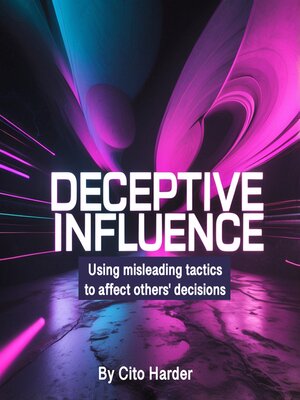Deceptive Influence
audiobook (Unabridged) ∣ Using Misleading Tactics to Affect Other's Decisions
By Cito Harder

Sign up to save your library
With an OverDrive account, you can save your favorite libraries for at-a-glance information about availability. Find out more about OverDrive accounts.
Find this title in Libby, the library reading app by OverDrive.



Search for a digital library with this title
Title found at these libraries:
| Library Name | Distance |
|---|---|
| Loading... |
Deceptive influence is a powerful tool used to manipulate thoughts, emotions, and decisions without the awareness of the affected individual. It operates through misleading tactics that distort reality, making people believe in false narratives or act against their best interests. This form of influence is found in various aspects of life, from personal relationships and workplaces to politics, marketing, and media. While influence itself is a natural part of human interaction, deception adds a layer of unethical persuasion that raises moral and psychological concerns.
At its core, deceptive influence relies on psychological vulnerabilities. People tend to trust familiar sources, respond emotionally before rationally analyzing information, and make decisions based on incomplete or distorted data. Manipulators exploit these tendencies by using selective truth, exaggeration, omission of key facts, and emotional appeals to push individuals toward specific actions or beliefs. The effectiveness of deceptive influence is largely due to its subtlety; victims often fail to recognize they are being misled until it is too late.
One of the most concerning aspects of deceptive influence is its widespread presence in modern society. In personal relationships, individuals may use gaslighting, guilt-tripping, or selective storytelling to control or manipulate their partners, friends, or family members. In the workplace, deceptive influence appears in corporate messaging, office politics, and misleading leadership practices. Companies use psychological tactics to create false urgency, encourage impulsive decisions, or present misleading information to employees and consumers.







